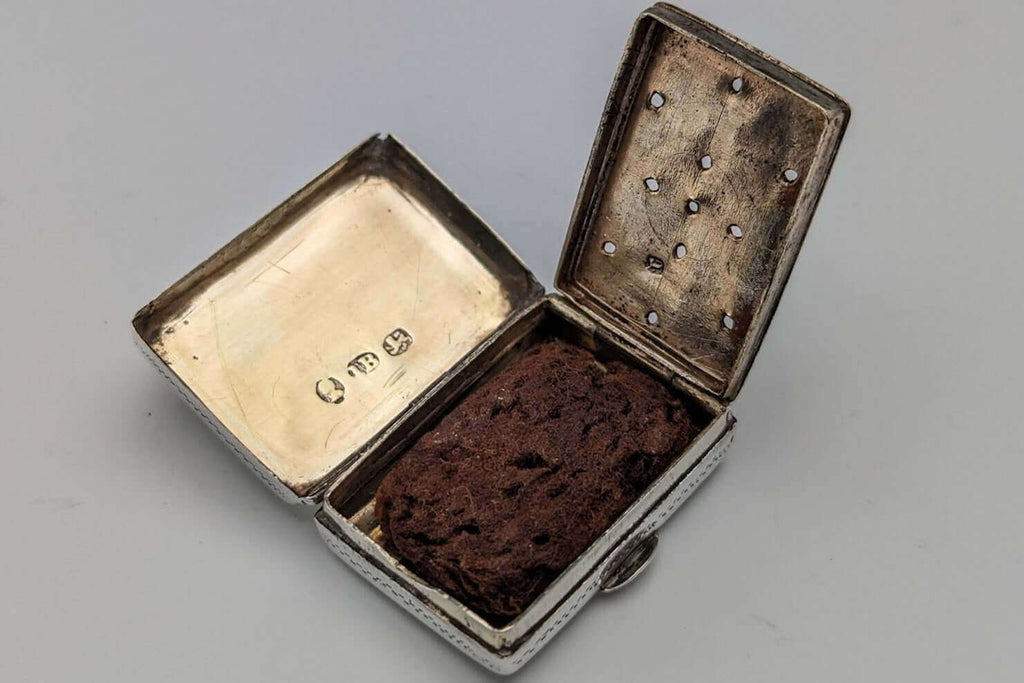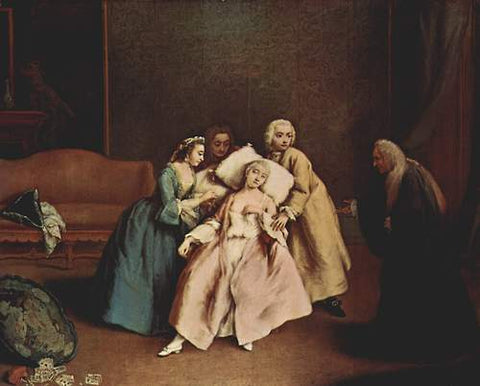antique vinaigrette
Posted by WATANABETAIGA

One item that was popular among the British upper class in the early to mid-19th century was a small case called a "vinaigrette."
"Vinaigrette" means "vinegar" in French, and is the term used in the antiques industry to refer to smell-inducing bottles.
It is a small case containing cotton impregnated with a strong fragrance mixed with acetic acid or ammonia.
history
In Europe, perfume containers called "pomanders" have existed since the Middle Ages.
At that time in Europe, hygiene was very poor, and even upper-class aristocrats did not keep themselves clean by taking baths.
It is said that there was a lack of waste disposal or sewage systems, so the city smelled of garbage.
At the time, fragrances extracted from plants and animals were very expensive, but people carried around cases of perfume to mask their odors.
In addition, poor hygiene led to many epidemics of infectious diseases, and it was believed that perfume had the power to prevent such diseases.
During the Tudor period in England around the 16th century, aromatic orange juice extracted from oranges was believed to be highly effective in preventing infectious diseases, and a case called a "pounquet box" for inhaling the scent became popular; this is said to be the prototype of vinaigrette.
Around 1770, more powerful aromatic vinegars were developed using acetic acid and concentrated perfume oils, and the containers became much smaller, measuring just about 3cm.
It was called "vinaigrette" because it contained vinegar-based flavorings.
The inside is gold plated to prevent corrosion and discoloration due to acid.
How it's used
Smaller cases could easily be slipped into a pocket or hung from a chatelaine, and both men and women began to carry them to mask bad odors or to sniff when they felt unwell.
Vinaigrette reached its peak in popularity during the Regency period under King George IV in the early 19th century.
At the time, corsets were an essential part of women's fashion, and many women reportedly fainted from the pain of wearing tight corsets at social events.
A popular story was one in which a man presses vinaigrette up the woman's nose, bringing her back to her senses, sparking a romance.
Apparently some women would faint in an attempt to impress men.

As this is an item to be worn on such romantic occasions, it has been carefully crafted, not only on the outside but also on the inside mesh, and the very small case is beautifully decorated.
Most vinaigrettes are made of silver, but some are more like jewelry, decorated with gold, enamel or precious stones.
Some were also combined with bracelets or snuff boxes.


summary
As the Regency era came to an end around 1840, King George IV's negative image as a scandalous spendthrift grew, and vinaigrette fell out of fashion.
These were only popular among upper-class aristocrats for a certain period in the first half of the 19th century, so they are rarer than other perfume cases or card cases.
In addition to being rare, they are small and highly decorative, making them popular collectible items with many collectors.
Even today, they can be enjoyed not only as collectibles but also in modern life, by soaking them in your favorite perfume or aroma and wearing them, or using them as stylish pill cases.











